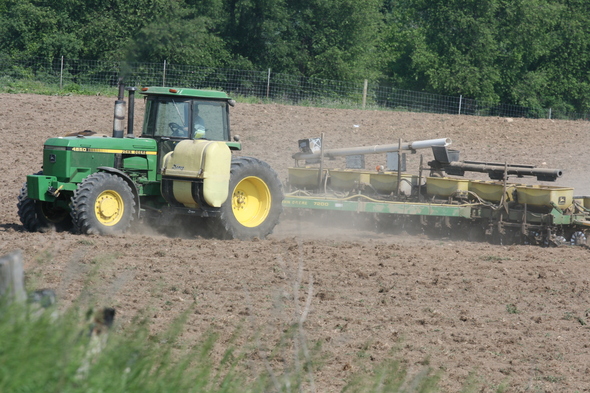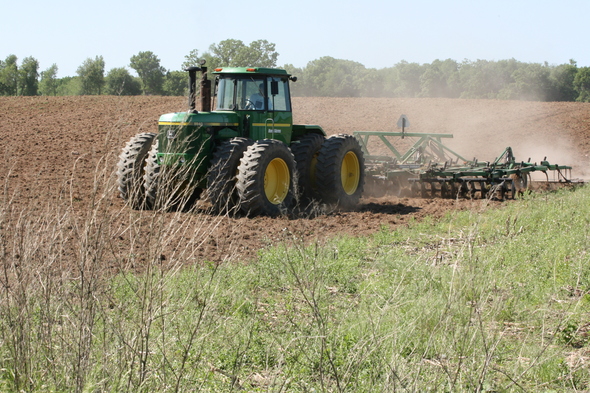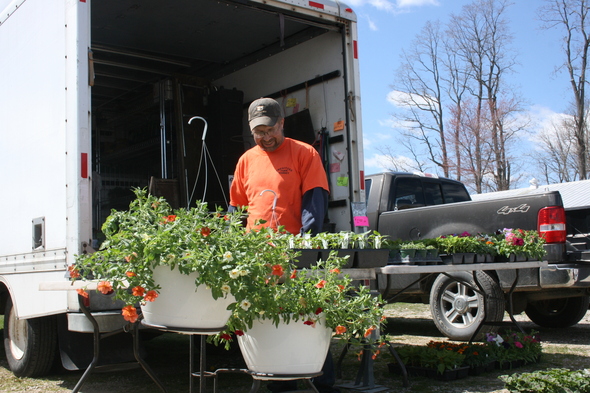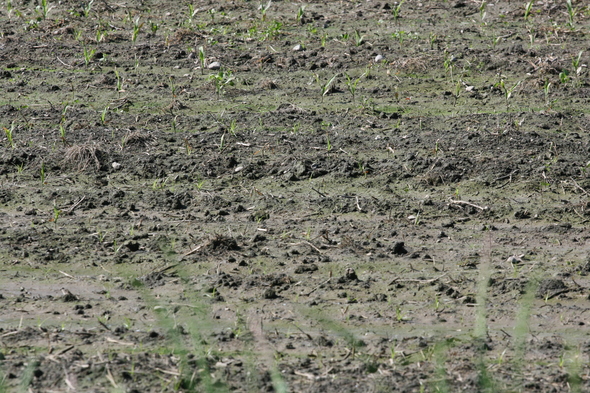After record rainy spring, Washtenaw County farmers play catch up in the fields

A farmer seeds a field in Lima Township last weekend.
Lisa Allmendinger | AnnArbor.com
According to the USDA, corn planting in the Midwest was 53 percent behind last week compared to a year ago and 37 percent behind the 10-year average.
Longtime Dexter Township farmer Carl Lesser said this has been the wettest spring since 1943, when he couldn’t get into the fields to plant until June 15.
But back then, he said, farmers were more diversified — they didn’t depend on just corn or soybeans to pay the bills. Instead, they planted other crops and had sheep, pigs, chickens and horses.
“We weren’t just rotating corn and soy beans,” he says.
However, the last few days of sunny skies have helped Washtenaw County farmers get into their fields to till and plant.

A farmer drags a field in Lima Township last Thursday before it was seeded Saturday.
Lisa Allmendinger | AnnArbor.com
Wade Pregitzer of Munith grows vegetables and melons on 20 acres for Community Supported Agriculture (CSA) customers as well as three farmers markets.
He’s predicting an “interesting season” ahead, with a surplus of vegetables in the middle of the season. Expect markets to be inundated with tomatoes and corn.
But, as of last week, his early tomatoes weren’t growing because of the cold.
“It shocks them when we go from one extreme to the next," he says.
Because of the weather, he hasn’t been able to get into his fields on schedule.
“Everything has been held up due to extreme wetness. Just as the fields begin to dry, it rains again, frequent and heavy,” he says.
Three or four years ago, he says, there was heavy rain in late May but it dried out rather quickly. Not so this year, which has been the wettest spring on record for the area. May alone saw 7.32 inches of rain.
And though the top of the soil in the fields might look dry in some areas, it’s wet 3, 4 or 5 inches below the surface. Farmers need about 6 inches of dry ground to properly till, fertilize and plant their seeds.

Wade Pregitzer grows vegetables and melons for Community Supported Agriculture (CSA) members who pay for a weekly share of his harvest. He sells the remainder of his produce at three farmers markets.
Lisa Allmendinger | AnnArbor.com
“Everything comes is cycles,” he says, predicting a hot and dry summer that will be good for sweet corn.
If corn isn’t in the ground by mid-June, farmers at larger operations must decide if they will plant soy beans or leave some fields idle. If fields are not planted, then farmers will have to fight weeds or plant a cover crop such as wheat until next year.
Some of the larger farming operations buy crop insurance to protect themselves because although one bad year might not wipe them out, two in a row could put them under.
Local Farm Bureau insurance agent David Tapping said in recent years, more and more farmers have been asking for information about crop insurance.
Lesser uses an average of 30,000 kernels per acre, with a bag of corn averaging $150 to $250, and each bag containing 80,000 kernels.
Some farmers might have as much as $3,000 to $4,000 invested in upfront costs when they head into the fields. Too much rain after planting can affect their yield and reduce their profits.

Corn that's already been planted in a field in Sylvan Township.
Lisa Allmendinger | AnnArbor.com
Meanwhile, those with crops already in the ground will wait and hope that heavy rain doesn't wash out seeds and seedlings.
Lisa Allmendinger is a regional reporter for AnnArbor.com. She can be reached at lisaallmendinger@annarbor.com.


Comments
KJMClark
Thu, Jun 9, 2011 : 11:38 a.m.
Yeah, what a mess! This spring was just nasty for planting. Then you manage to plant something and the seedlings get hit by a week with no rain, hungry bugs, and searing temperatures. I think it's springs like this that made old-time farmers do their plowing in the fall and leave their fields bare over the winter. If you only get one or two days to get your planting done, you don't want to have much field work to do. Congratulations to all the farmers with decent stands of corn already! They must have worked their tails off in one of those tiny planting windows.